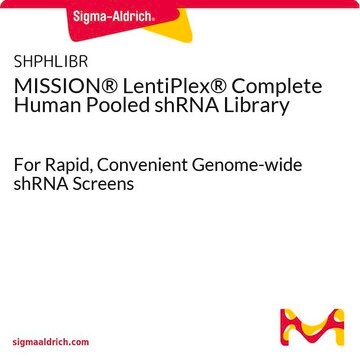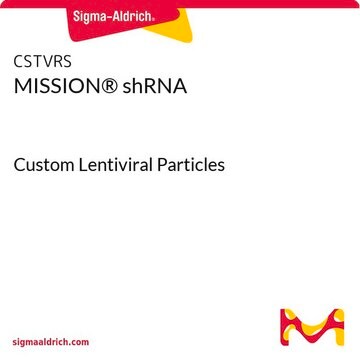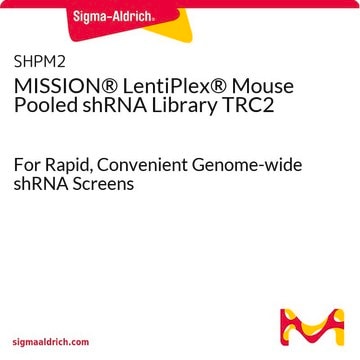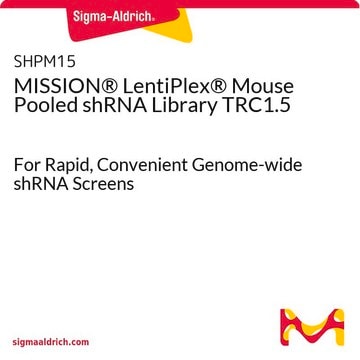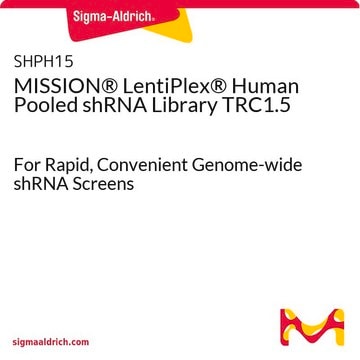SHPM01
MISSION® LentiPlex® Mouse Pooled shRNA Library
For Rapid, Convenient Genome-wide shRNA Screens
About This Item
Produits recommandés
Gamme de produits
MISSION®
Concentration
≥5x108 VP/ml (via p24 assay)
Technique(s)
capture ELISA: 5 × 108 TU/mL using p24
Conditions d'expédition
dry ice
Température de stockage
−70°C
Catégories apparentées
Description générale
The MISSION LentiPlex Mouse shRNA Pooled Library is a genome-wide lentiviral pool produced using a proprietary process. The library consists of over 75,000 shRNA constructs from the TRC collection targeting 15,000+ mouse genes. Each library is tested for shRNA representation before product release to ensure robust library coverage. The library is provided in ready-to-use lentiviral format at titers of at least 5 x 108 TU/ml via p24 assay and is pre-divided into ten subpools of approximately 8,000 shRNA constructs each. Amplification and sequencing primers are also provided for downstream target identification.
The library is pre-divided into ten subpools of approximately 8,000 shRNA constructs each. Each library is enough material for six screens at 100X representation.
Please visit sigma.com/lentiplex to learn more and see example data and uses.
Autres remarques
Sigma′s deconvolution service lets you easily identify the genes that impact your pooled shRNA screen.
- Next-generation sequencing of clonesgives a precise number of individual clone occurrence within a pooled shRNA sample
- Comprehensive, reproducible results from pooled shRNA screens
- Statistically robust and information-rich data
MISSION custom pooled viral shRNA libraries
Pooled shRNA RNAi screening approaches are fast becoming an economical alternative for cell based screens. MISSION RNAi is now offering custom pooled shRNA viral libraries. Just give us your list of genes or pick a gene set and leave the rest to us!
Contact your local Sigma sales representative for more information or submit an inquiry to MISSION RNAi
Informations légales
Code de la classe de stockage
12 - Non Combustible Liquids
Classe de danger pour l'eau (WGK)
WGK 3
Point d'éclair (°F)
Not applicable
Point d'éclair (°C)
Not applicable
Certificats d'analyse (COA)
Recherchez un Certificats d'analyse (COA) en saisissant le numéro de lot du produit. Les numéros de lot figurent sur l'étiquette du produit après les mots "Lot" ou "Batch".
Déjà en possession de ce produit ?
Retrouvez la documentation relative aux produits que vous avez récemment achetés dans la Bibliothèque de documents.
Articles
Presenting an article on Pooled Lentiviral shRNA Screens to Identify Essential Cancer Pathways
RNAi Consortium (TRC): Collaborative effort among academic labs and biotech/pharma institutes advancing RNA interference research.
Notre équipe de scientifiques dispose d'une expérience dans tous les secteurs de la recherche, notamment en sciences de la vie, science des matériaux, synthèse chimique, chromatographie, analyse et dans de nombreux autres domaines..
Contacter notre Service technique